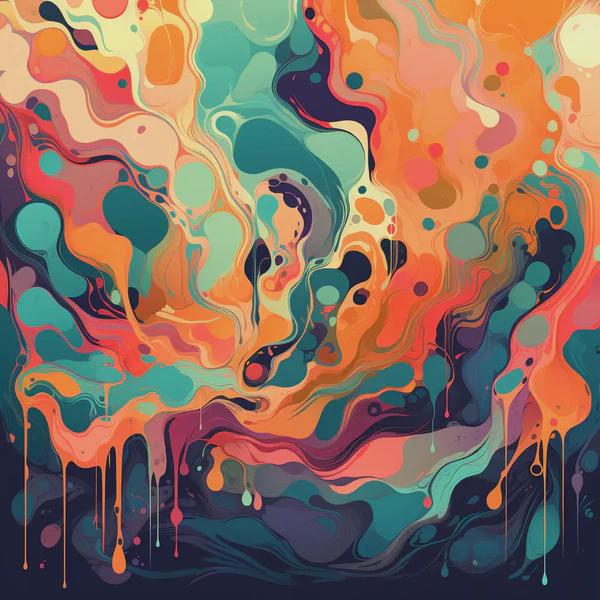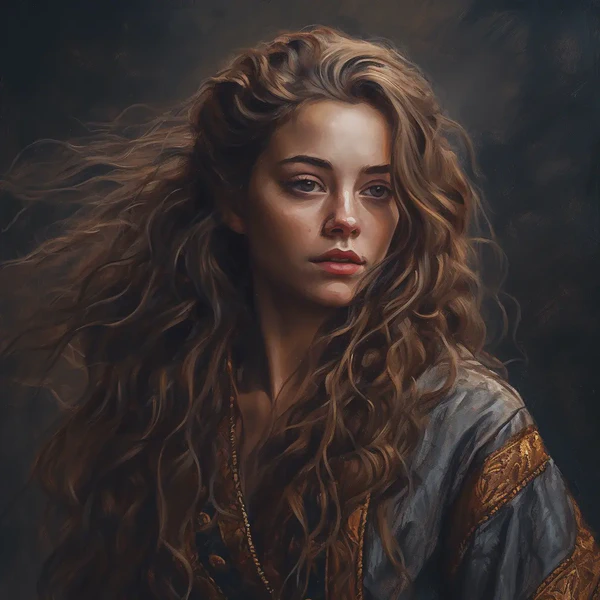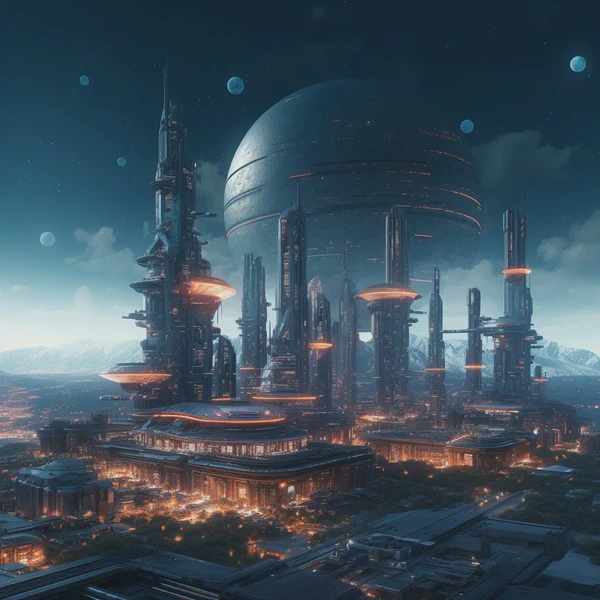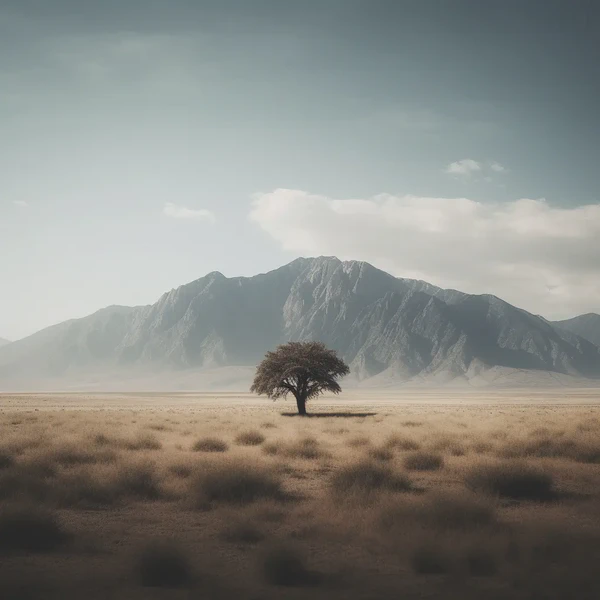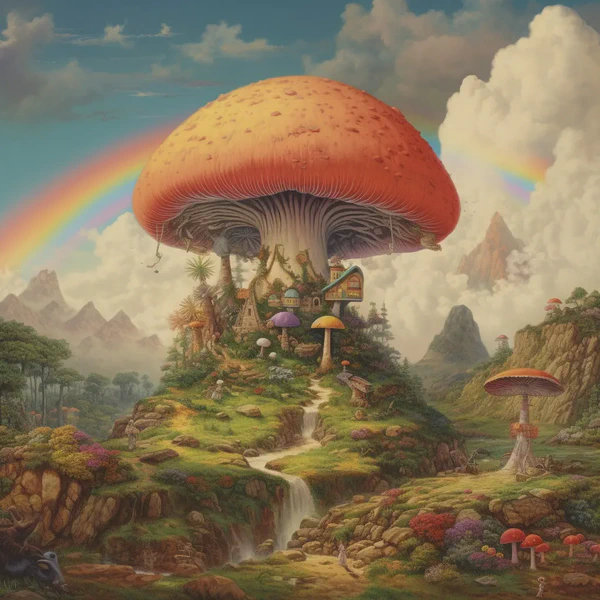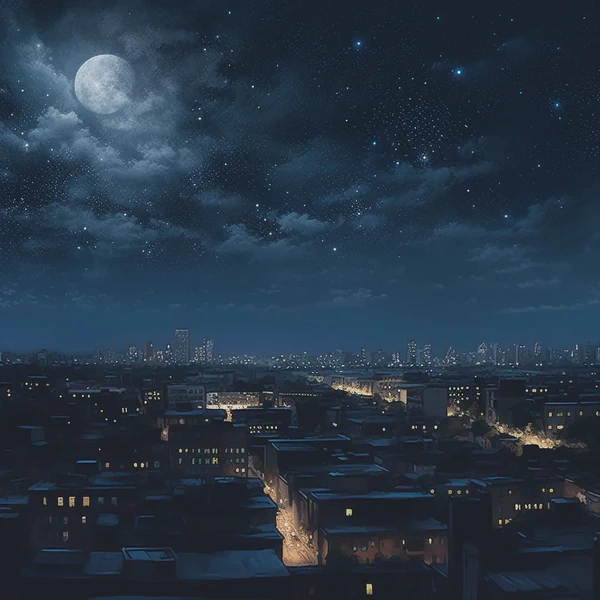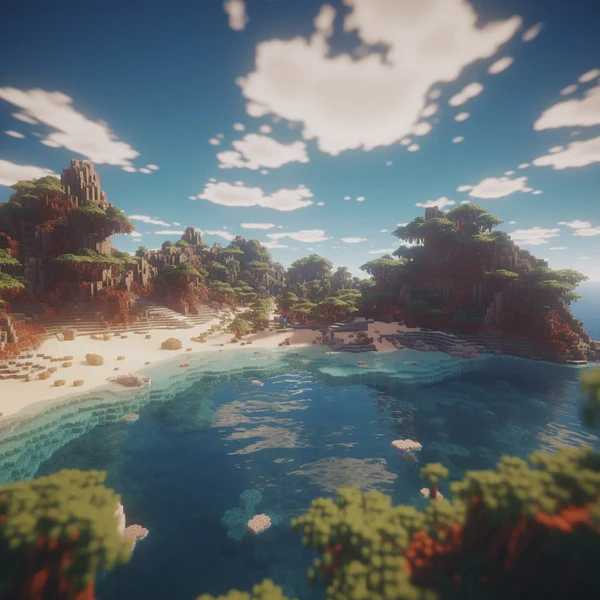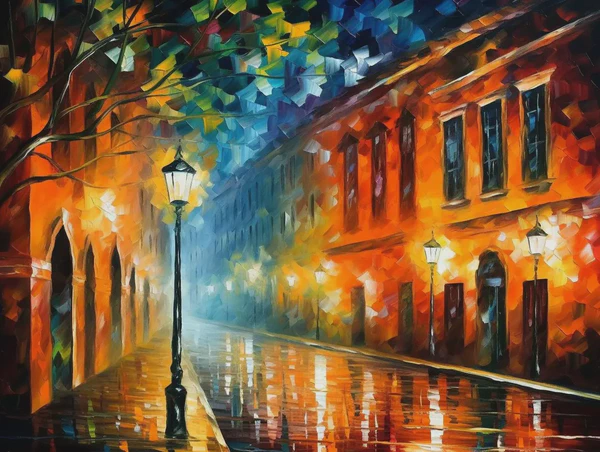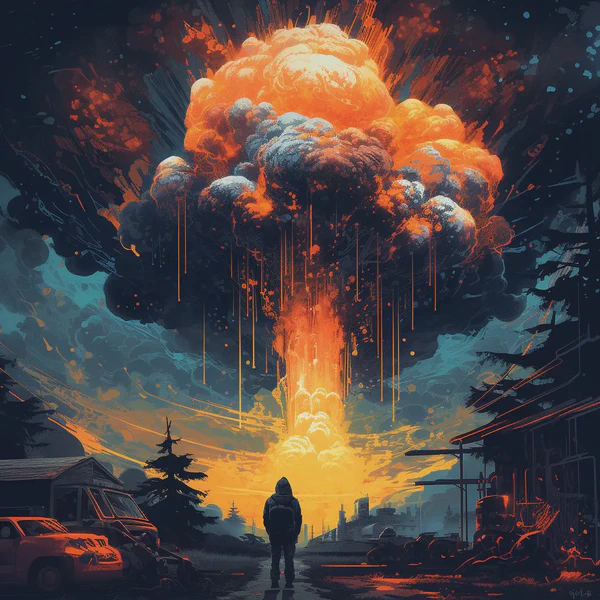The Magic of Midjourney Prompts: How to Create Beautiful AI-Generated Images

I. Introduction to Midjourney prompting
Overview of Midjourney
Midjourney is an AI-based platform for generating images using natural language prompts. It is powered by the OpenAI GPT-3 model and DALL·E 2, which can create high-quality, photorealistic pictures from textual descriptions. Midjourney’s user-friendly interface makes it easy for anyone to create beautiful images with just a few clicks.
Advantages of Using Midjourney for Image Generation
There are several advantages to using Midjourney for image generation. First, it allows users to create images without extensive knowledge of design software. Second, it can generate photorealistic images that are difficult to develop using traditional design tools. Third, it saves time and resources, as the AI-based system can create images in seconds. Fourth, Midjourney’s user-friendly interface allows users to easily modify and refine their generated images to meet their needs.
Examples of Stunning Midjourney-Generated Images
Midjourney has been used to create various stunning images, from landscapes to people to abstract designs. Here are some examples of Midjourney-generated photos that showcase the platform’s capabilities:
These examples show how Midjourney can quickly and efficiently create a wide range of high-quality images, from realistic to abstract.
II. Understanding Midjourney prompts
What are prompts?
In the context of Midjourney, prompts are inputs that are used to instruct the AI to generate images based on specific parameters. A prompt can be a simple phrase, a sentence, or a paragraph. It’s a set of instructions or criteria that the AI follows to create a unique image.
How do prompts work in Midjourney?
Midjourney prompts work by providing the AI with specific criteria and constraints for generating an image. These criteria include anything from particular colors or shapes to abstract concepts like emotions or feelings.
The AI then uses these criteria to create a unique image. The more detailed and specific the prompt, the more precise and unique the image.
Examples of Midjourney prompts
Here are some examples of Midjourney prompts:
These prompts provide specific instructions and criteria for the AI to follow when generating an image. The resulting photos will be unique and tailored to the specific criteria provided in the prompt.
III. Creating Effective Midjourney Prompts
Best Practices for Creating Prompts
-
Start with a clear idea: Before creating a prompt, it’s essential to have a clear idea of the type of image you want to generate. Think about the subject matter, the style, the colors, and any other details you wish to include.
-
Keep it simple: Midjourney works best with simple, straightforward prompts. Avoid long, complex prompts that may need clarification for the algorithm and result in subpar output.
-
Use specific language: Use particular language in your prompts to guide the algorithm toward creating the desired output. For example, instead of “a landscape with a house,” try “a sunset over a mountain range with a cabin in the foreground.”
-
Experiment with different prompts: Be bold and experiment with various prompts to see what works best. Midjourney is a powerful tool that can generate a wide range of images. Take advantage of that flexibility to try out different ideas.
Tips for Maximizing Creativity and Output Quality
-
Incorporate randomness: Midjourney can generate surprising and unexpected results when given prompts with a degree of randomness. Try adding a random element to your prompts to see what output you can get.
-
Use constraints: Sometimes, adding controls can boost creativity. For example, limiting yourself to a specific color palette or style can help you develop unique and creative prompts that result in stunning images.
-
Incorporate real-world inspiration: Take inspiration from the real world to create prompts that feel grounded in reality. This can include using photographs, paintings, or other visual references to create prompts that capture a specific mood or style.
-
Feel free to iterate: Creating effective Midjourney prompts takes practice, like any creative process. Feel free to iterate and refine your prompts to improve your output quality.
Examples of Effective Midjourney Prompts
IV. Midjourney prompt commands and parameters
Midjourney provides a variety of commands and parameters to help users create unique and custom prompts for generating images. In this section, we will explore the different commands and parameters that Midjourney offers and how to use them effectively.
/ask - get an answer to a question
/blend - easily blend two images together
/daily_theme - toggle notification pings for the #daily-theme channel update
/describe - generate four example prompts based on an image upload
/faq - generate a link to popular prompt craft channel FAQs
/fast - switch to Fast mode
/help - show helpful basic information and tips about the Midjourney Bot
/imagine - generate an image using a prompt
/info - view information about your account and any queued or running jobs
/stealth - switch to Stealth mode (for Pro Plan Subscribers)
/public - switch to Public mode (for Pro Plan Subscribers)
/subscribe - generate a personal link for a user’s account page
/settings - view and adjust the Midjourney Bot’s settings
/prefer option - create or manage a custom option
/prefer option list - view your current custom options
/prefer suffix - specify a suffix to add to the end of every prompt
/show - regenerate a job within Discord using its Job ID
/relax - switch to Relax mode
/remix - toggle Remix mode
Aspect Ratio (–aspect, –ar) Change the aspect ratio of a generation. Example: “model:GPT-3, seed:dog, aspect:4:3”
Chaos (–chaos ) Change how varied the results will be. Higher values produce more unusual and unexpected generations. Example: “model:DALL-E 2, seed:tree, chaos:80”
Negative Prompting (–no) Remove specific elements from the generated image. Example: “model:ClipDraw, seed:car, no:sky”
Quality (–quality, –q) Control the rendering quality of the output. Higher values cost more and lower values cost less. Example: “model:VQGAN+CLIP, seed:flower, quality:.5”
Repeat (–repeat, –r) Create multiple jobs from a single prompt. Example: “model:BigGAN, seed:cat, repeat:5”
Seed (–seed) Set a seed number to generate the initial image grids. Example: “model:CLIPDraw, seed:city, seed:12345”
Stop (–stop) Finish a job partway through the process. Example: “model:VQGAN+CLIP, seed:mountain, stop:50”
Style (–style) Switch between versions of the Midjourney model. Example: “model:BigGAN, seed:dog, style:4a”
Stylize (–stylize, –s) Control how strongly Midjourney’s default aesthetic style is applied to jobs. Example: “model:DALL-E 2, seed:cup, stylize:500”
Upscaler Parameters (–uplight, –upbeta, –upanime) Upscale images to increase size and add additional details using different upscalers. Example: “model:VQGAN+CLIP, seed:landscape, uplight”
Niji Model (–niji) Use an alternative model focused on anime-style images. Example: “model:VQGAN+CLIP, seed:anime, niji”
High Definition (–hd) Use an early alternative model that produces larger, less consistent images. Example: “model:BigGAN, seed:city, hd”
Test (–test) Use the Midjourney special test model. Example: “model:DALL-E, seed:dog, test”
Testp (–testp) Use the Midjourney special photography-focused test model. Example: “model:VQGAN+CLIP, seed:food, testp”
Version (–version, –v) Use a different version of the Midjourney algorithm. Example: “model:BigGAN, seed:animal, version:3”
Creative (–creative) Modify the test and testp models to be more varied and creative. Example: “model:VQGAN+CLIP, seed:portrait, creative”
Image Weight (–iw) Set the image prompt weight relative to text weight. Example: “model:DALL-E 2, seed:apple, iw:.75”
Sameseed (–sameseed) The same seed value will be used to create a single random noise field applied across all images in the initial grid. When –sameseed is specified, all images in the initial grid use the same starting noise and will produce similar generated images. Example: “model:DALL-E 2, seed:cat, scale:2, upbeta, –sameseed”
Video (–video) Saves a progress video of the initial image grid being generated. Emoji reacts to the completed image grid with ✉️ to trigger the video being sent to your direct messages. –video does not work when upscaling an image. Example: “model:CLIPDraw, seed:mountains, iterations:10, –video”
Each Midjourney prompt command serves a specific purpose and can be used to create images, change default settings, monitor user info, and perform other helpful tasks. To use a command, simply type it in a Discord channel or direct message with the Midjourney Bot. You can also use parameters to further customize your command.
Examples of prompts using different commands and parameters
V. Midjourney prompt resources
Where to find inspiration for prompts
-
Images: The most common source of inspiration for Midjourney prompts are images. You can find inspiration by browsing image-sharing platforms like Instagram, Flickr, or Unsplash, or by searching for specific keywords on Google Images.
-
Writing prompts: Another source of inspiration for Midjourney prompts is writing prompts. Several websites provide a variety of writing prompts, such as Reedsy, Writer’s Digest, and Reddit’s Writing Prompts subreddit.
-
Random generators: If you’re looking for something more spontaneous, several online prompt generators can provide many ideas. One such generator is the Seventh Sanctum prompt generator.
Community resources for sharing and learning about prompts
-
Discord channels: The Midjourney Discord server has several channels dedicated to sharing and discussing prompts. These include the #daily-theme, #prompt-craft, and #share-your-work channels.
-
Reddit: The /r/Midjourney subreddit is a community of Midjourney users who share their prompts, discuss their experiences, and offer tips and advice to others.
-
Twitter: The #Midjourney hashtag is a great place to find inspiration and connect with other Midjourney users.
Tools and websites for generating Midjourney prompts
-
Artbreeder: Artbreeder is a website that allows you to generate images using machine learning. It’s an excellent tool for generating Midjourney prompts. You can use the images you generate as starting points for your prompts.
-
Deep Dream Generator: Deep Dream Generator is another website that uses machine learning to generate images. It allows you to adjust several parameters to create unique and exciting images.
-
Text generators: Several websites generate text prompts that you can use with Midjourney. One such website is AI Dungeon, which allows you to generate text-based prompts for various genres.
-
Prompt generators: Several websites generate random prompts specifically for Midjourney. One such website is the Midjourney prompt generator, which provides a variety of prompts based on different models and parameters.
Utilizing these resources allows you to find inspiration, connect with other Midjourney users, and generate various prompts to feed into the Midjourney bot.
VI. Advanced Midjourney prompt techniques
Midjourney is a powerful AI tool that can generate stunning images from just a few prompts. While simple prompts can produce excellent results, combining different techniques can take your creations to the next level. This section will explore some advanced Midjourney prompt techniques to help you get the most out of this incredible tool.
Layering prompts for more complex images
One way to create more complex and detailed images is by layering multiple prompts on top of each other. By combining prompts, you can give Midjourney more information to work with and create images with more depth and complexity.
For example, you can layer a prompt for a landscape with a prompt for a specific object, such as a tree or a building, to create an image incorporating both elements. You can layer prompts for different styles or colors to create unique and eye-catching compositions.
Here are some examples of layered prompts:
Using AI-generated text as prompts
Midjourney can generate images based on text prompts, which means you can use AI-generated text as a starting point for your creations. This technique can produce surprising and fascinating results, as the AI can develop ideas you may not have considered.
For example, you can use an AI text generator to create a short story or a poem and then use that text as a prompt for Midjourney. You can also use text from books or articles to generate images representing certain concepts or themes.
Here are some examples of AI-generated text prompts:
Creating custom datasets for Midjourney
Another advanced technique for Midjourney prompts is to create custom datasets for the AI to learn from. By curating your own dataset of images or text, you can guide Midjourney’s output toward a specific style or theme.
For example, you can create a dataset of images with a specific color scheme or a dataset of text related to a particular topic. You can then use those datasets as prompts for Midjourney, and the AI will generate images that reflect the style or theme of the dataset.
To create a custom dataset in Midjourney, you can use the prefer command with the option parameter. Here’s an example:
This will create a new option called mydataset in your Midjourney account. You can then add images or text to this dataset using the prefer command with the add parameter:
You can also remove items from the dataset using the prefer command with the remove parameter:
Once you have created your custom dataset, you can use it as a prompt for Midjourney by including the name of the dataset in your imagine command:
This will generate images based on the images or text in your custom dataset, allowing you to create custom themes and styles for your Midjourney prompts.
These advanced Midjourney prompt techniques are just the tip of the iceberg regarding the possibilities of this amazing AI tool. You can create unique, captivating, genuinely unique images by experimenting with different prompts and techniques.
VII. Conclusion
Recap of Midjourney prompting
Midjourney is an AI-powered tool that allows users to generate images based on various prompts. These prompts can be simple or complex and incorporate text and images. Midjourney offers a wide range of models and parameters to customize and fine-tune the output of the AI, as well as a variety of commands to control the process.
In this article, we covered the basics of Midjourney prompting, including the different types of prompts, how to use commands and parameters to control the output, and how to find inspiration and resources for creating prompts. We also delved into more advanced techniques, such as layering prompts and creating custom datasets, to make even more complex and unique images.
Final thoughts and tips for using Midjourney effectively
To use Midjourney effectively, it’s essential to understand the different models and parameters available and how to use them to achieve the desired output. It’s also important to experiment with different prompts and use various sources for inspiration.
When using Midjourney, it’s essential to remember that the AI could be better and may only sometimes produce the desired results. However, users can achieve impressive and creative results with practice and experimentation.
Try Midjourney for yourself and share your creations
I encourage everyone to try Midjourney and share their creations with the Midjourney community. Whether you’re a professional artist looking for new inspiration or someone with no artistic background looking to explore your creative side, Midjourney offers a unique and exciting way to generate art using AI technology.
So why not give it a try? Use the prompts and techniques we’ve covered in this article to create your own unique images and share them with the world. Who knows what kind of unique creations you’ll come up with?
